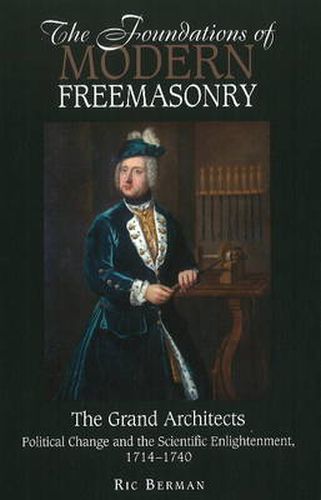Readings Newsletter
Become a Readings Member to make your shopping experience even easier.
Sign in or sign up for free!
You’re not far away from qualifying for FREE standard shipping within Australia
You’ve qualified for FREE standard shipping within Australia
The cart is loading…






Following the appointment of its first aristocratic Grand Masters in the 1720s and in the wake of its connections to the scientific Enlightenment, ‘Free and Accepted’ Masonry rapidly became part of Britain’s national profile and the largest and most influential of Britains extensive clubs and societies. The new organisation did not evolve naturally from the mediaeval guilds and religious orders that pre-dated it, but was reconfigured radically by a largely self-appointed inner core. It became a vehicle for the expression and transmission of their political and religious views, and for the scientific Enlightenment concepts that they championed, and hence naturally attracted an aspirational membership. Through an examination of new and previously unexplored primary documentary evidence, the aim is to contribute to an understanding of contemporary English political and social culture, and explore how Freemasonry became a mechanism that promoted the interests of the Hanoverian establishment, connecting a number of elite metropolitan and provincial figures. A range of networks centred on the aristocracy, parliament, the learned and professional societies, and the magistracy, are examined; and key individuals instrumental in spreading the Masonic message are evaluated. Special focus is given to the role of the ‘Craft’ in the development of the scientific Enlightenment . Ric Berman concludes that Freemasonry should be recognised not only as the most prominent of the many eighteenth-century fraternal organisations, but also as a significant cultural vector and a component of the social, economic, scientific and political transformation then in progress. This analysis throws a new and original light on the formation and development of what rapidly became a national and international phenomenon.
$9.00 standard shipping within Australia
FREE standard shipping within Australia for orders over $100.00
Express & International shipping calculated at checkout
Following the appointment of its first aristocratic Grand Masters in the 1720s and in the wake of its connections to the scientific Enlightenment, ‘Free and Accepted’ Masonry rapidly became part of Britain’s national profile and the largest and most influential of Britains extensive clubs and societies. The new organisation did not evolve naturally from the mediaeval guilds and religious orders that pre-dated it, but was reconfigured radically by a largely self-appointed inner core. It became a vehicle for the expression and transmission of their political and religious views, and for the scientific Enlightenment concepts that they championed, and hence naturally attracted an aspirational membership. Through an examination of new and previously unexplored primary documentary evidence, the aim is to contribute to an understanding of contemporary English political and social culture, and explore how Freemasonry became a mechanism that promoted the interests of the Hanoverian establishment, connecting a number of elite metropolitan and provincial figures. A range of networks centred on the aristocracy, parliament, the learned and professional societies, and the magistracy, are examined; and key individuals instrumental in spreading the Masonic message are evaluated. Special focus is given to the role of the ‘Craft’ in the development of the scientific Enlightenment . Ric Berman concludes that Freemasonry should be recognised not only as the most prominent of the many eighteenth-century fraternal organisations, but also as a significant cultural vector and a component of the social, economic, scientific and political transformation then in progress. This analysis throws a new and original light on the formation and development of what rapidly became a national and international phenomenon.